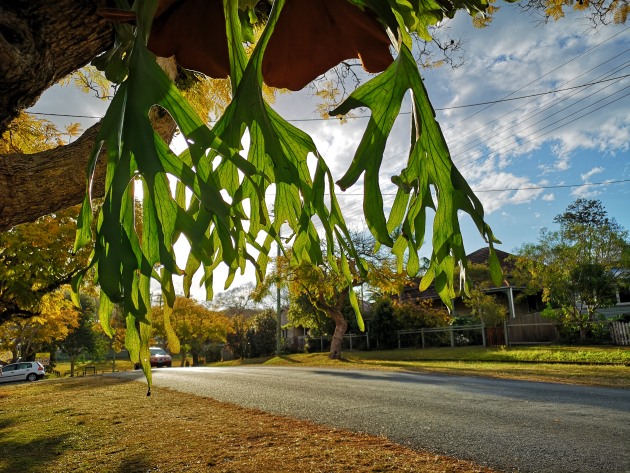I’m not a big fan of planned obsolescence, and truth be told, I’d be quite happy to still be using my Nokia 2110. This one time, I drove from Bellevue Hill to Bondi Junction, in Sydney, about 5 minutes away. Just as I was about to get out the car, I searched for my phone. It was nowhere to be found. I got out of the car in a panic, only to find it still sitting on the roof of the car, waiting for me. (Note: “truth” above is not true at all. I’m quite happy to not be carrying a brick around anymore, but I digress.)

The Huawei P20 Pro, the company’s flagship phone is a pleasure to use. And it’s certainly making Apple, Google, and Samsung sit up and pay attention. The screen resolution (1080 x 2240, 408ppi) is gorgeous, and crystal clear, and if you’re comfortable with a phone on the large side (155mm x 73.9mm), you should definitely consider checking it out.
But it’s more than just a phone. It’s a phone wrapped around a camera. And this is where it really starts to shine.
The cameras/s
The first thing that sets the Huawei P20 Pro apart from its competitors is that it sports not only a Leica camera, but a Leica Triple Camera! Three cameras on back of the phone. So, is this just a fancy gimmick, or truly a revolution in phone photography? Well, if Leica is happy to put their name to it, we’re comfortable that it’s the latter.

The results are truly impressive, and the flexibility to let the camera make the decisions, or you take control entirely will not disappoint. Something else that sets the P20 Pro apart from its competitors is its approach to black-and-white photography. While others offer a monochrome filter, Huawei is one of the only brands with a dedicated monochrome lens, from Leica.

The main camera offers 40 megapixel resolution and an f/1.8 lens. The monochrome lens is 20 megapixels with an f/1.6 aperture. The third lens, used for zooming, is 8 megapixels. The genius of the three lens set up is that all three lenses work together, and have a specific role in the image capture process – the 40 megapixel sensor captures colour, the 20 megapixel monochrome sensor captures additional detail and texture, and the 8 megapixel sensor is used for zoom. The 1/1.7-inch RGB sensor, approximately twice the size of the smaller sensors in most other smartphones, is capable of capturing around 20% more light than most rivals.

The camera has Master Artificial Intelligence built in. This allows the camera to read a scene and adjust the camera’s settings accordingly to ensure the best results. Overall, the camera did particularly well identifying scenes. However, one of the downsides is the post processing automatically undertaken. And it can tend to make scenes look rather…artificial. Nevertheless, switching off the function is easy enough if the results are not to your liking.

Shooting modes include aperture priority, Night, Portrait, Video, Panorama, Light Painting, HDR, a dedicated Monochrome mode, and Pro. The Pro mode allows you to change metering mode, ISO, shutter speed, EV for bracketing, focus mode, and white balance.

A feature that we’re sure Cartier-Bresson would be impressed by is Ultra Snapshot. It allows you to take a photo even when your phone’s screen is off. All you need to do is tap the volume down button rapidly twice in succession and the moment is captured. Alternatively, you can customise the phone so that the double-tap opens the camera app.
While the phone’s main camera has a resolution of 40 megapixels, the default is set slightly lower (10 megapixels) as some of the camera features don’t function on the highest resolution, such as 3x optical zoom, Night mode, and a couple of others.

Build quality
The P20 Pro looks and feels like a thing of beauty. Huawei’s flagship model, the phone is comfortable in the hand, and is made from aluminium and toughed glass, but exactly just how tough was one test we weren’t comfortable undertaking, especially given its RRP of $1099.

The near edge-to-edge OLED screen is fantastic. The 6.1 inch (15.49cm) display boasts a resolution of 1080 x 2240 pixels (408ppi). The phone itself measures 155x73.9x7.8mm, and comes in two colours, black or twilight. The phone weighs about 180g.
The fingerprint reader is conveniently located on the front of the phone.

Battery life and storage
The massive 4,000mAh battery will ensure that you never run out of battery prematurely. In fact, going two day on a single change was no drama at all. The P20 Pro charges with USB-C, and is capable of fast charging thanks to its 'super charge fast-charging' feature. You can expect a 50% charge in around 20 minutes.
The P20 Pro comes with 128GB on on-board storage. Huawei must assume that’s more than enough storage space as the phone does not include a micro SD slot for memory expansion.


Get more stories like this delivered
free to your inbox. Sign up here.





